French military legend Napoleon Bonaparte died 200 years ago and the coin world marks the anniversary
Better late than never, as they say, here’s our roundup of coins commemorating the bicentenary this week of the death of pint-sized Gallic terror, Napoleon Bonaparte. An icon in France and one of the most famous figures in history, Napoleon changed the face of Europe, and especially of his adopted homeland.
He left behind an expansive legacy of which much was positive, but ultimately, he was an arrogant man, always chasing power, and full of psychological complexes. He worked hard to excel, but worked equally hard to enrich himself, starting with the wholesale stripping of Italian art and treasure during his 1796 campaign. He was a talented military tactician, but his personailty was not one ideally suited to leadership of a world power. His impact was phenomenal, however.
The coin world has stepped up with some really cool precious metal designs, which we’ve laid out below, along with a lightweight timeline of the little lunatics life. It’s an eclectic selection, encompassing shaped designs, coloured coins and a large range of sizes in both gold and silver. We’ll republish this as a Thematic Guide next week, so it can be kept up to date with new issues as and when they come out.
REVOLUTIONARIES: NAPOLEON BONAPARTE by CIT
Not a specific release for the anniversary, this is more of a timely coincidence as Napoleon is the sixth in Coin Invest’s superb ‘Revolutionaries’ series. There’s a one ounce silver coin and a half-gram minigold. The former carries a startlingly realistic portrait for a coin, and the minigold has a lot of detail for a sub-14 mm diameter piece of metal. Both are impressive.
| DENOMINATION | COMPOSITION | DIAMETER | FINISH | MINTAGE |
| 1,000 Togrog (Mongolia) | 31.1 grams 0.999 silver | 38.61 mm | Proof, colour | 1,000 |
| 1,000 Togrog | 0.5 grams 0.9999 gold | 13.92 mm | Proof | 5,000 |
1769 – Born on the 15 August on the Mediterranean island of Corsica, his parents Carlo Buonaparte (a lawyer) and Letizia Romalino Buonaparte had eight children, of which Napoleon was the second. Not wealthy, but of minor noble status regardless, they survived the transition of Corsica from Genoan to French ownership, with Napoleon adopting the French spelling of his surname.
NAPOLEON BONAPARTE SHAPED by MDM
A striking coin from MDM, it’s shaped for, and depicts a younger Napoleon than is usually chosen, wearing his famous Bicorn hat. Even the obverse has had time and effort expended on it, so definitely one of our favourites in the selection brought to market. Packaging is a fairly large and decorated wooden box, as befitting a five ounce coin.
| DENOMINATION | COMPOSITION | DIMENSIONS | FINISH | MINTAGE |
| 250 Francs (Djibouti) | 155.5 grams 0.999 silver | 72 x 62 mm | Prooflike, colour | 500 |
1785 – After learning French at a mainland school, he went on to attend a French military academy, from which he graduated in 1785. He joined an artillery regiment of the French Army as a Second Lieutenant, but France was about to plunge headlong into civil strife.
NAPOLEON CROSSING THE ALPS by Mennica Polska
Napoleon Crossing the Alps was a series of five oil on canvas paintings by the French artist Jacques-Louis David between 1801 and 1805. It depicts Napoleon on horseback leading his army through the Great St Bernard Pass in May 1800. One of the most widely reproduced paintings of the man, the five versions differ in details like the colour of the cloak and the horse. The Mint of Poland has chosen the original painting That hangs in the Château de Malmaison. It’s hardly an ambitious coin, but the mint does digital colour well, and despite only weighing ten grams, it reaches out to the full crown size of 38.6 mm.
| DENOMINATION | COMPOSITION | DIMENSIONS | FINISH | MINTAGE |
| 500 Francs CFA (Cameroon) | 10.0 grams 0.999 silver | 38.61 mm | Proof, colour | 500 |
1789– The French Revolution begins, but Napoleon spent much of this period back in Corsica, where he became chummy with the Jacobins, a group espousing democracy. Napoleon’s affiliation with the group led to clashes with the Corsican governor, Pasquale Paoli, and his family fled to France, where Napoleon went back into military service.
NAPOLEON I BICENTENARY: BICORN by Monnaie de Paris
This coin is in the shape of a bicorn, Napoleon’s iconic headdress. On the reverse is depicted the grenadiers of the guard, on the left, representing the battles of the famous Great Army, while the allegory of justice, on the right, taken from the preface of the civil code, symbolises the civil reforms of this period. The link is made by the Legion of Honour, which acts as a pivot between the military and the civilian world by virtue of its status as a distinction for “both worlds”. The French cockade is also present. On the obverse, against a background of the sun of Austerlitz, various iconic symbols are depicted, such as the eagle, bees, laurels and the famous silhouette of the Emperor. A terrific release, encapsulating the man very well.
| DENOMINATION | COMPOSITION | DIMENSIONS | FINISH | MINTAGE |
| 10 Euro (France) | 22.2 grams 0.999 silver | 37.0 mm | Proof | 3,000 |
| 200 Euro (France) | 31.1 grams 0.999 gold | 37.0 mm | Proof | 250 |
1794– Another famous Jocobin was Augustin Robespierre and his brother Maximilien, and the now Brigadier General Napoleon was very friendly with both. However, it wasn’t long before the Robespierre’s fell from grace, quickly followed by their heads falling from their necks. Ever the opportunist, Napoleon bounced back from a spell under house arrest to crush a royalist uprising, and in 1795 returned to the army as a Major General.
NAPOLEON 200TH ANNIVERSARY by CIT
A nice looking design, issued for the island territory of St. Helena, the place where Napoleon died. Another depiction of a more youthful man, it’s packed with fine detail, and employs smartminting to full effect. The two ounce silver coin in particular has some prominent high relief, and the minigold maintains an exceptional level of detail for an 11 mm diameter coin. Hardly anybody can match CIT & BH Mayer for the quality of a minigold strike. The silver will be the most impressive variant in hand, we’re certain.
| DENOMINATION | COMPOSITION | DIMENSIONS | FINISH | MINTAGE |
| £1 (St Helena) | 31.1 grams 0.999 silver | 38.61 mm | Proof | 1,821 |
| £2 (St Helena) | 62.2 grams 0.999 silver | 38.61 mm | Proof | 821 |
| £2 (St Helena) | 0.5 grams 0.9999 gold | 11.0 mm | Proof | 2,500 |
| £5 (St Helena) | 7.78 grams 0.9999 gold | 22.5 mm | Proof | 500 |
1796– Napoleon leads a French army into battles against the old enemy, Austria, in Italy. He was very successful, and a treaty signed with Austria to end the war was favourable to France. In 1798, he was offered command of an invasion force against England, but predicted it wouldn’t go well. He suggested an invasion of Egypt as a compromise, looking to interrupt the trade routes from Britain to India.
BATTLE OF WATERLOO COMMANDERS by MDM
A cheaper set of three coins that, while issued for Napoleon’s bicentenary, actually commemorate the 1815 Battle of Waterloo. One of the most famous battles in European history, it cemented the Duke of Wellington’s reputation, and that of Marshall Blucher after the narrow defeat of Napoleoins forces. The battle ended Napoleon as a force and he was exiled to St. Helena soon after. The coins are relatively simple affairs. Each half ounce coin depicts one of the three commanders at Waterloo. The trio come in a neatly themed box.
| DENOMINATION | COMPOSITION | DIMENSIONS | FINISH | MINTAGE |
| £0.50 (Gibraltar) | 15.5 grams 0.999 silver x3 | 33.0 mm | Proof | 1,821 |
1798– At the Battle of the Pyramids, Napoleon defeated a force of Mamluks, the military rulers of Egypt, but his forces became stranded when the Royal Navy did what it normally does – sails over and sinks everything… Not giving up, he marched on the Ottoman controlled city of Acre, but the siege failed. Worried about events in France, he left his army and returned home.
LOUVRE: THE CORONATION OF NAPOLEON by Monnaie de Paris
This one depicts The coronation of Emperor Napoleon I and the coronation of Empress Josephine on 2 December 1804, a painting by the artist Jacques-Louis David exhibited in the Louvre. The obverse features a representation of the Louvre Pyramid and the building. Inside the pyramid, a key work of the museum: the Victory of Samothrace. A different view, not focused on his military exploits, it reminds us that Napoleon was not just another general, but a man with lofty ambitions. There’s lots on both faces of this one. Silver and gold versions, of course, but also a cheap (€6) base metal variant for the younger collector.
| DENOMINATION | COMPOSITION | DIMENSIONS | FINISH | MINTAGE |
| 10 Euro (France) | 22.2 grams 0.999 silver | TBC mm | Proof | 2,500 |
| 50 Euro (France) | 155.5 grams 0.999 silver | 50.0 mm | Proof | 250 |
| 50 Euro (France) | 7.78 grams 0.999 gold | 22.0 mm | Proof | 500 |
| 0.25 Euro (France) | 15.8 grams CuNi | TBC mm | B/Unc | 500,000 |
1799– Napoleon was part of a group that overthrew the five-man ‘Directory’ that ruled France. He was made First Consul in the three-man Consulate, effectively the most powerful figure in French politics. The following year, Napoleon’s forces crushed the Austrian army in Italy, and in 1802, the Treaty of Amiens brought a temporary peace with the British.
NAPOLEON CROSSING THE ALPS by t.b.c.
A late addition and a bit of a mystery at present, this five ounce silver coin takes inspiration from the same painting as the Mint of Poland issue, but is a more ambitious piece. The art occupies the top half of this expansive 80 mm diameter piece, with the bottom filled with a depiction of the building that now houses it, the Castle of Malmaison. It’s a high-relief strike, and has both colour and gilding, the latter for the cape. It’s a shame no effort was expended on the obverse, but a fine coin regardless. Boxed with a COA.
| DENOMINATION | COMPOSITION | DIMENSIONS | FINISH | MINTAGE |
| $10 NZD (Niue) | 155.5 grams 0.999 silver | 80.0 mm | Prooflike, colour | 200 |
1802– He spent much time trying to improve life in France, with a centralised goivernment, constitutional reforms, and a fixing of relationships with the Pope. The Napoleonic Code was instituted and it remains the basis for the French legal system today. His growing popularity led to yet more opportunistic acts, and in 1804, he crowned himself Emperor in Notre Dame cathedral.
NAPOLEON BICENTENARY by Monnaie de Paris
This two coin range is clearly based on the shaped Bicorn design, reproducing it on the reverse face, while the obverse has a mix of elements, including a background of the sun of Austerlitz. Several symbols of the regime are depicted, such as the eagle, bees, laurels and a silhouette of Napoleon.
| DENOMINATION | COMPOSITION | DIMENSIONS | FINISH | MINTAGE |
| 50 Euro (France) | 155.5 grams 0.999 silver | 50.0 mm | Proof | 250 |
| 50 Euro (France) | 7.78 grams 0.999 gold | 22.0 mm | Proof | 750 |
1803– The Napoleonic Wars commence, partly financed by the sale of Louisiana to the United States. He scored a fantastic victory over the Austrians and Russians at Austerlitz in 1805, but the Royal Navy again proved a hinderance and Admiral Nelson devestated the French fleet at the Battle of Trafalgar. He started a blockage of European ports called the Continental System, designed to prevent British trade. in 1807 he battered the Russians, and in 1809 defeated the Austrians again. At home, he started to reintroduce an aristocracy, dishing out gongs to his mates.
NAPOLEON FRACTIONAL SET by MDM & Monnaie de Paris
The first time the Monnaie de Paris has issued a fractional gold set and it’s being released through MDM rather than directly. Just 250 sets will be produced and they include the portrait design you can see above, but in minigold, quarter ounce and one ounce forms. The icing on the cake is the beautiful silver medal which has the eagle standard on one side, and an effigy of Napoleon on the other. Terrific stuff.
| DENOMINATION | COMPOSITION | DIMENSIONS | FINISH | MINTAGE |
| None | 31.1 grams 0.999 silver | 37.0 mm | Antique | 250 |
| 5 Euro (France) | 0.5 grams 0.999 gold | 11.0 mm | Proof | 250 |
| 50 Euro (France) | 7.78 grams 0.999 gold | 22.0 mm | Proof | 250 |
| 200 Euro (France) | 31.1 grams 0.999 gold | 37.0 mm | Proof | 250 |
1810– Russia backed out of the Continental System of port blockades, so in 1812, Napoleon invaded. Believing himself incapable of defeat, he marched an army of 600,000 into Russia, going so far as to take Moscow. The Russians declined formal battle, using guerilla tactics and baiting French forces every deeper into the capacious interior of the country. Sensing how dangerous his situation was, he ordered the retreat of the army back to France through the Russian winter, and while continually harrassed by Russian army units. Just 100,000 men survived the retreat, even though they never actually lost a battle.
NAPOLEON BEE DESIGN by East India Company
“When Napoleon crowned himself Emperor of France in 1804, he was keen to replace the remnants of the fallen Bourbon dynasty, including their emblem, the Fleur du Lys. He learned about the discovery of the tomb of Childeric I, king of the Merovingian Franks, and the 300 tiny gold bees that were found buried alongside his remains as a symbol of immortality. The bee is symbolic of harmony, working together for a bigger cause. Napoleon recognised these characteristics and used the golden bee in his Coat of Arms, coronation robes and on the wallpaper and carpets of his palaces. It was a key icon of an Empire which spread across Europe until Napoleon’ final defeat at Waterloo.”
A pretty coin, but one for the Napoleon afficionado who would understand the symbolism. That’s fine, as it makes a nice change from the usual depictions of the man himself, and the period was replete with such iconography. One of two variations on a theme from EIC.
| DENOMINATION | COMPOSITION | DIMENSIONS | FINISH | MINTAGE |
| £1 (St Helena) | 31.1 grams 0.999 silver | 38.61 mm | Proof | 1,000 |
| £5 (St Helena) | 1,000 grams 0.999 silver | 100.0 mm | Proof | 50 |
| £5 (St Helena) | 31.1 grams 0.999 gold | 32.0 mm | Proof | 100 |
1813– Since 1808, France had also been fighting a war in the Iberian Peninsula against Spanish and Portuguese forces, backed up by the British. A French army was crushed at the Battle of Leipzig in 1813, and the winning coalition then marched on Paris, which it captured in March 1814, along with Napoleon. He was compelled to abdicate and then exiled to the Mediterranean island of Elba.
NAPOLEON ‘N’ DESIGN by East India Company
The second variation from East India Company is a fundamentally identical design, except for the replacement of the bee with a symbolic ‘N’ for Napoleon. ‘Which you prefer will be a matter of personal taste, but the same mix of formats make up this range, and even the mintages are the same.
| DENOMINATION | COMPOSITION | DIMENSIONS | FINISH | MINTAGE |
| £1 (St Helena) | 31.1 grams 0.999 silver | 38.61 mm | Proof | 1,000 |
| £5 (St Helena) | 1,000 grams 0.999 silver | 100.0 mm | Proof | 50 |
| £5 (St Helena) | 31.1 grams 0.999 gold | 32.0 mm | Proof | 100 |
1815– After less than a year in exile, he returned to Paris with more than 1,000 supporters, and the new king, Louis XVIII, scarpered pronto. The big European powers, Britain, Austria, Prussia and Russia, prepared for war and Napoleon quickly raised a new army and struck first, hoping to pick off the allies one by one. He invaded Belgium and defeated a Prussian army at the Battle of Ligny. His elation was short-lived, however, and just two days later on 18 June, he was soundly defeated by the British and the Prussians at the legendary Battle of Waterloo. He was forced to abdicate.
NAPOLEON BICENTENARY: PORTRAIT by Monnaie de Paris
“On this side, we have represented the portrait of Napoleon with his laurel crown. Several strong symbols are depicted: the Legion of Honour instituted by Napoleon, the Eagle, the bees and the sun of Austerlitz. The words “2S” are inscribed inside it commemorating the date of the victory of the battle of Austerlitz, 2 December 1805, the “S” representing the month of December.”
The standard offering from the Monnaie de Paris, it includes the most numerous precious metal variant on offer. That coin is just 17 grams of 0.333 silver, so barel;y precious metal, but it does have a very low €12.00 price-tag, not far off the €10 denomination. It also comes in an attractive gatefold pack filled with information. For those wanting a bigger version of this nice design, there’s a 50 gram, 0.900 silver version.
| DENOMINATION | COMPOSITION | DIMENSIONS | FINISH | MINTAGE |
| 10 Euro (France) | 17.0 grams 0.333 silver | 31.0 mm | Uncirculated | 75,000 |
| 100 Euro (France) | 50.0 grams 0.900 silver | 47.0 mm | Uncirculated | 5,000 |
1821– Rightly fearing he could not be trusted, in October 1815 Napoleon was exiled to St. Helena, a British island in the South Atlantic so remote it doesn’t have a McDonalds. He died six years later at the age of 51. It’s suspected he had stomach cancer, although there has been speculation he may have been poisoned by arsenic, a component of the green wallpaper that was the fashion at the time. It wasn’t until 1840 that his body was returned to Paris, where it was interred in a crypt at Les Invalides.



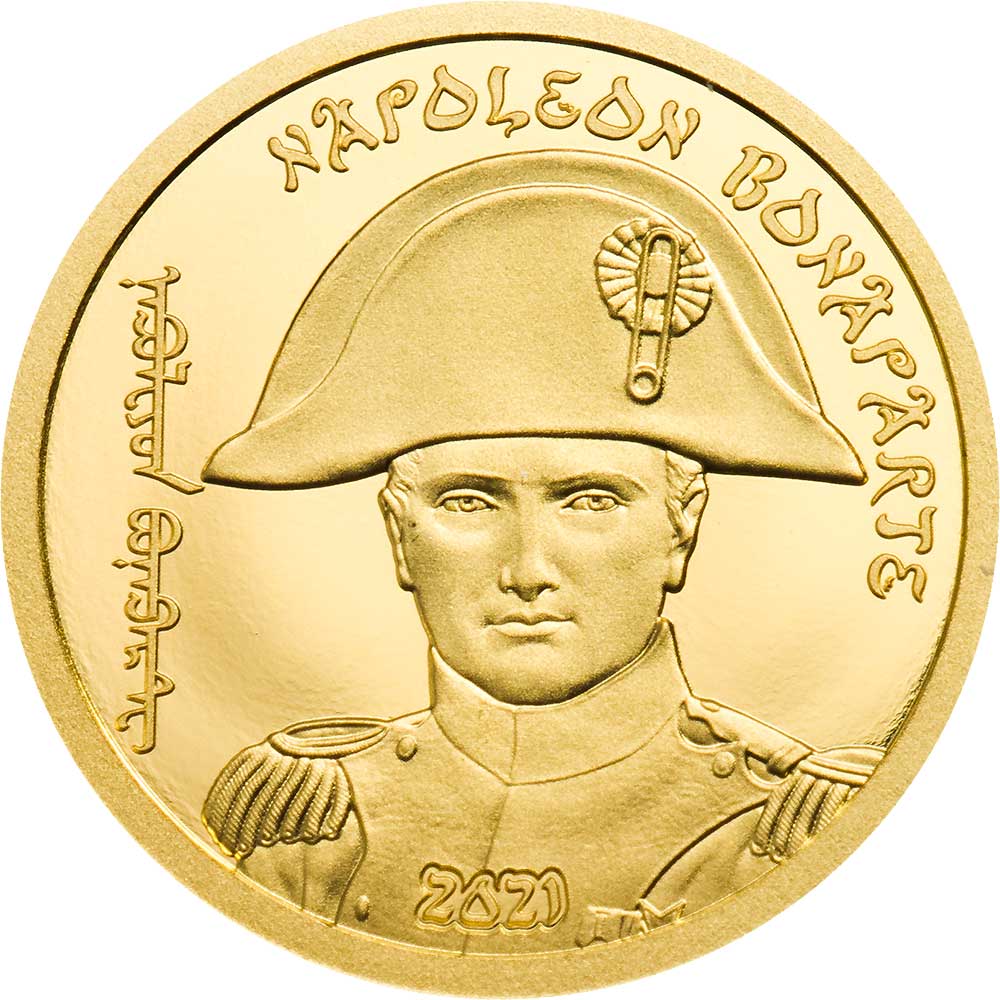
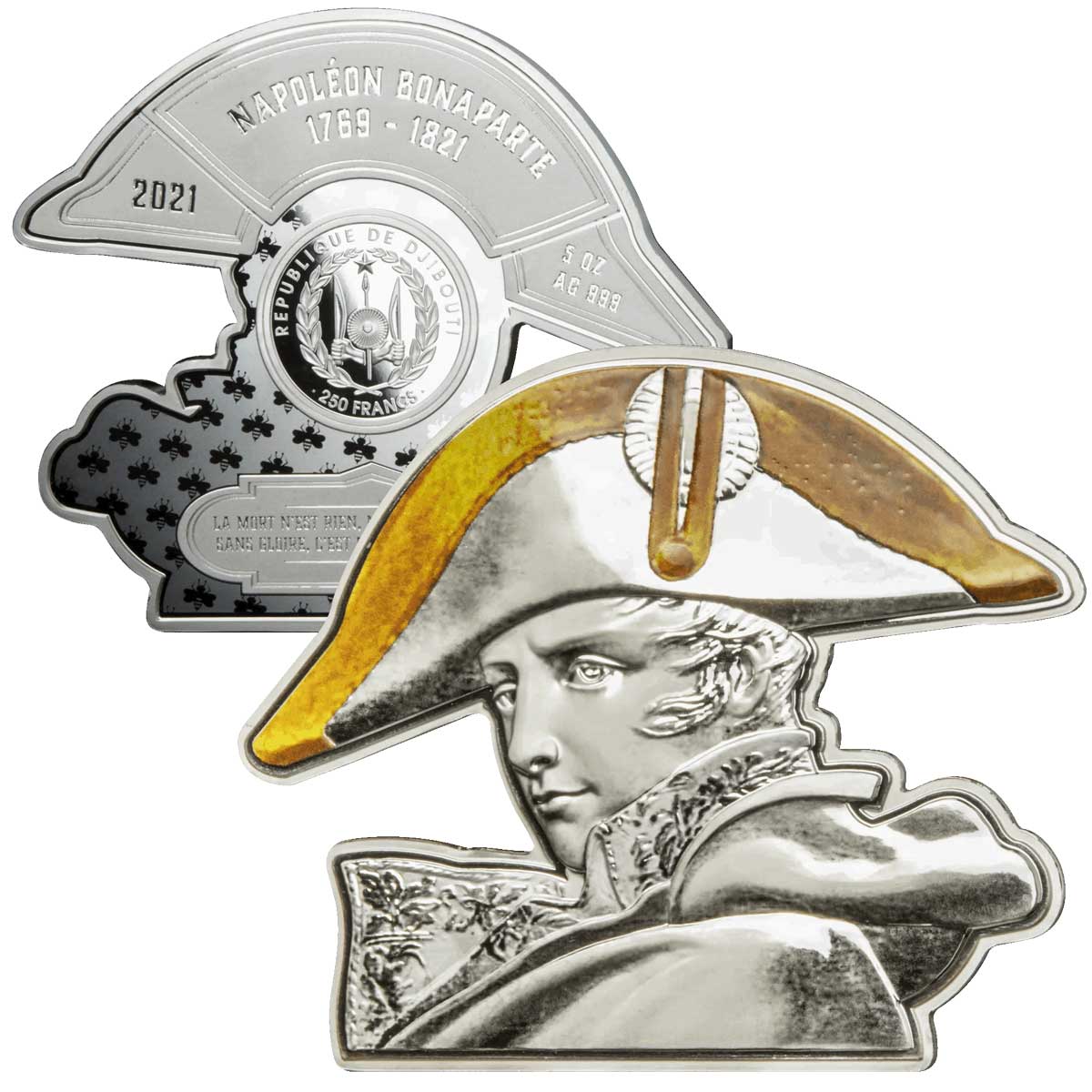
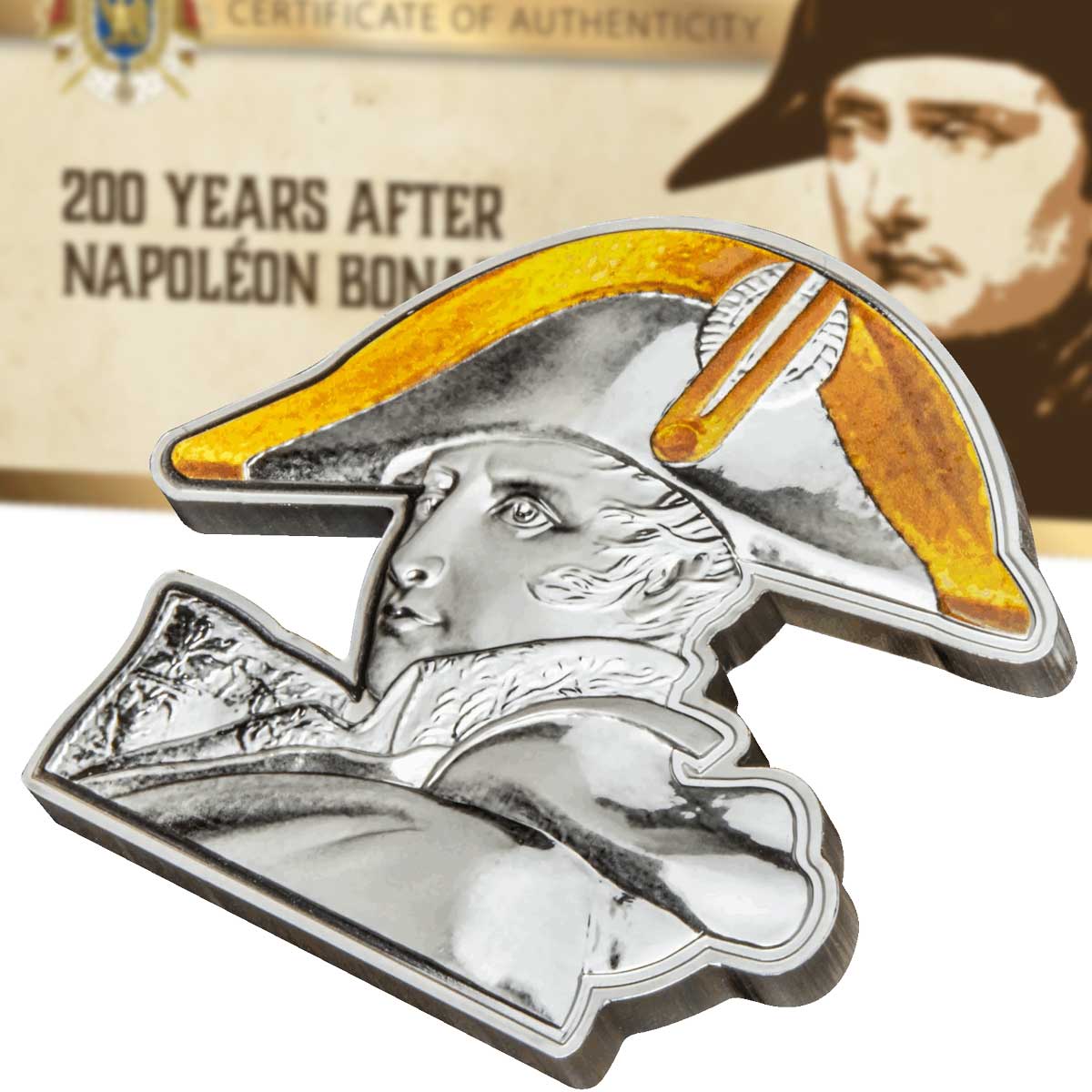
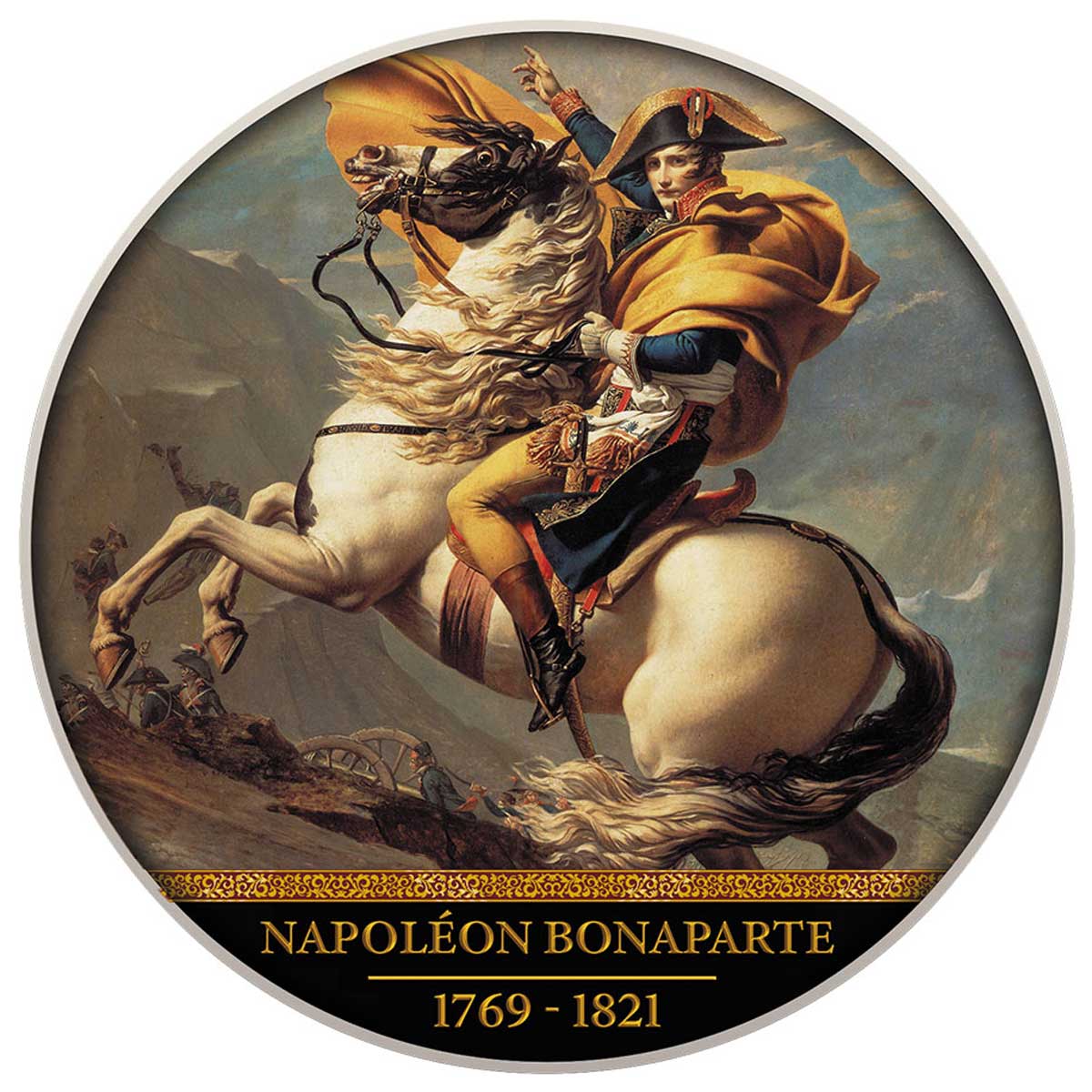
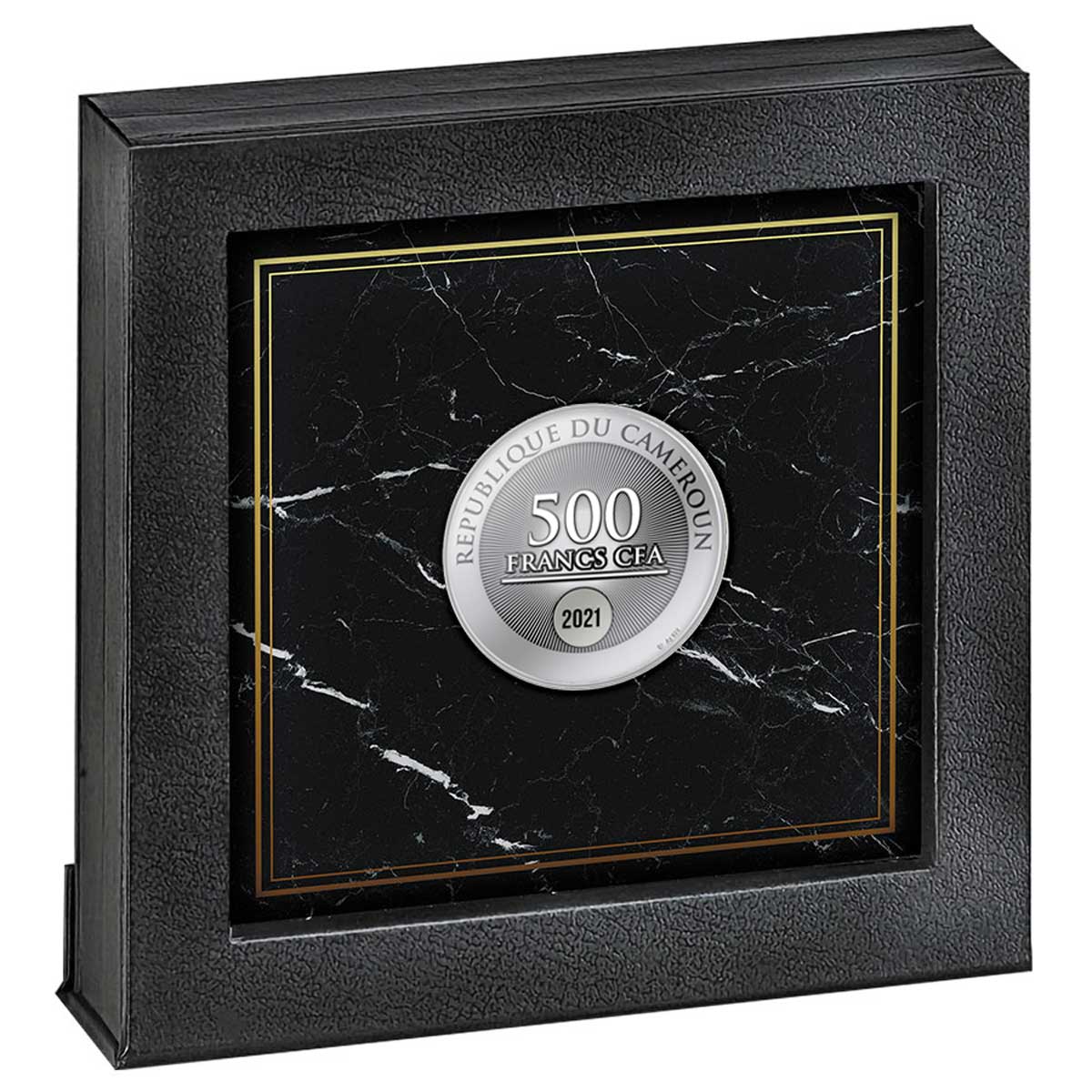
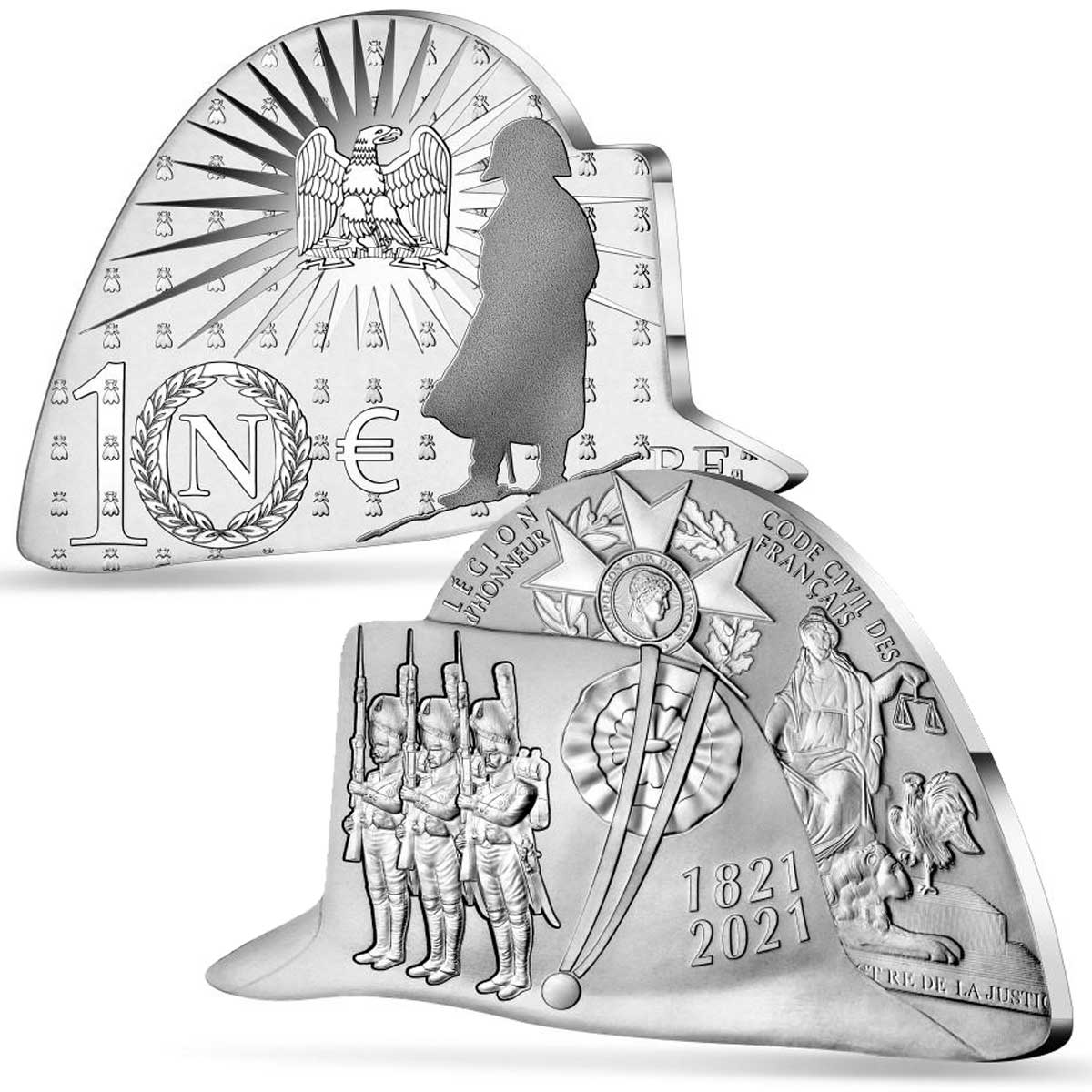
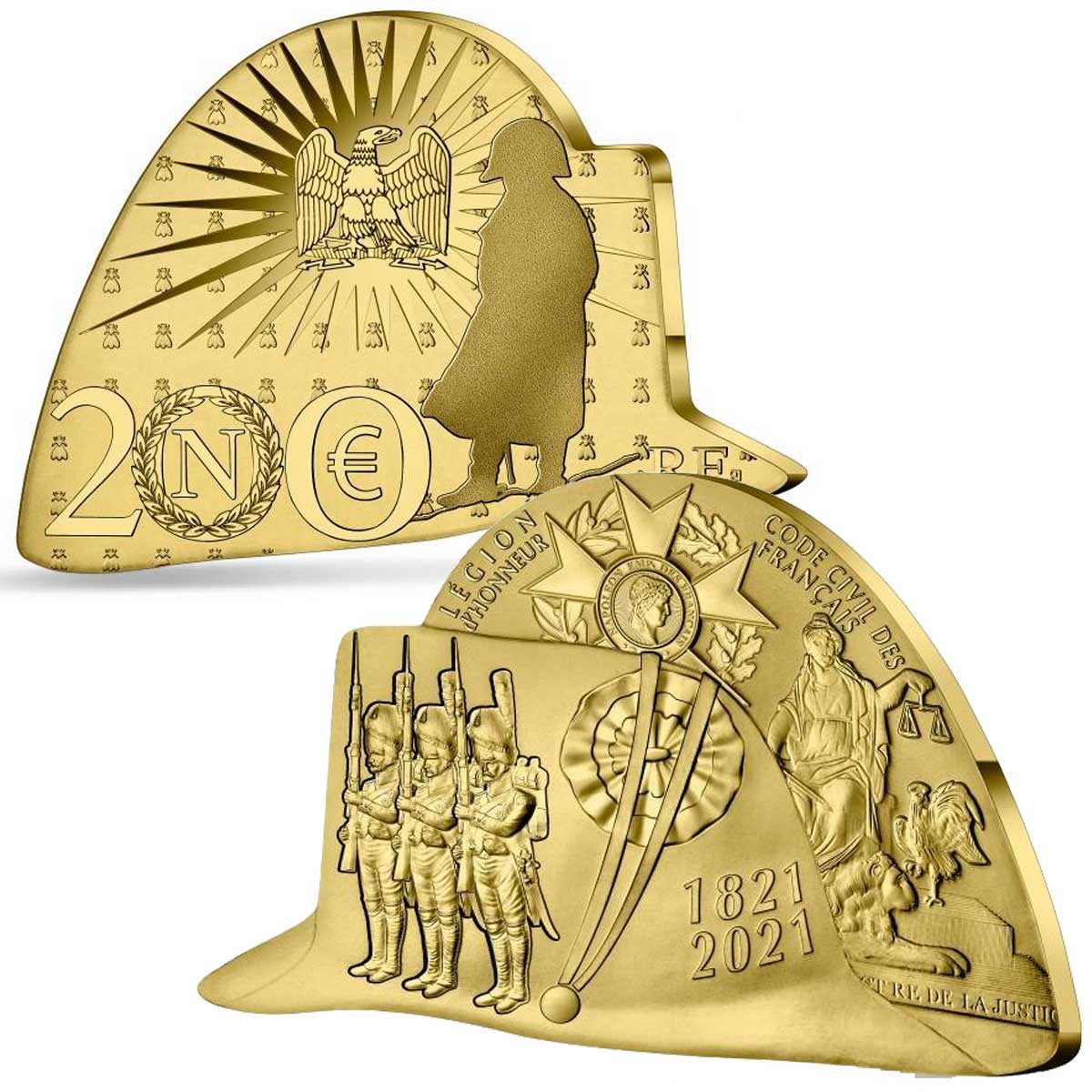
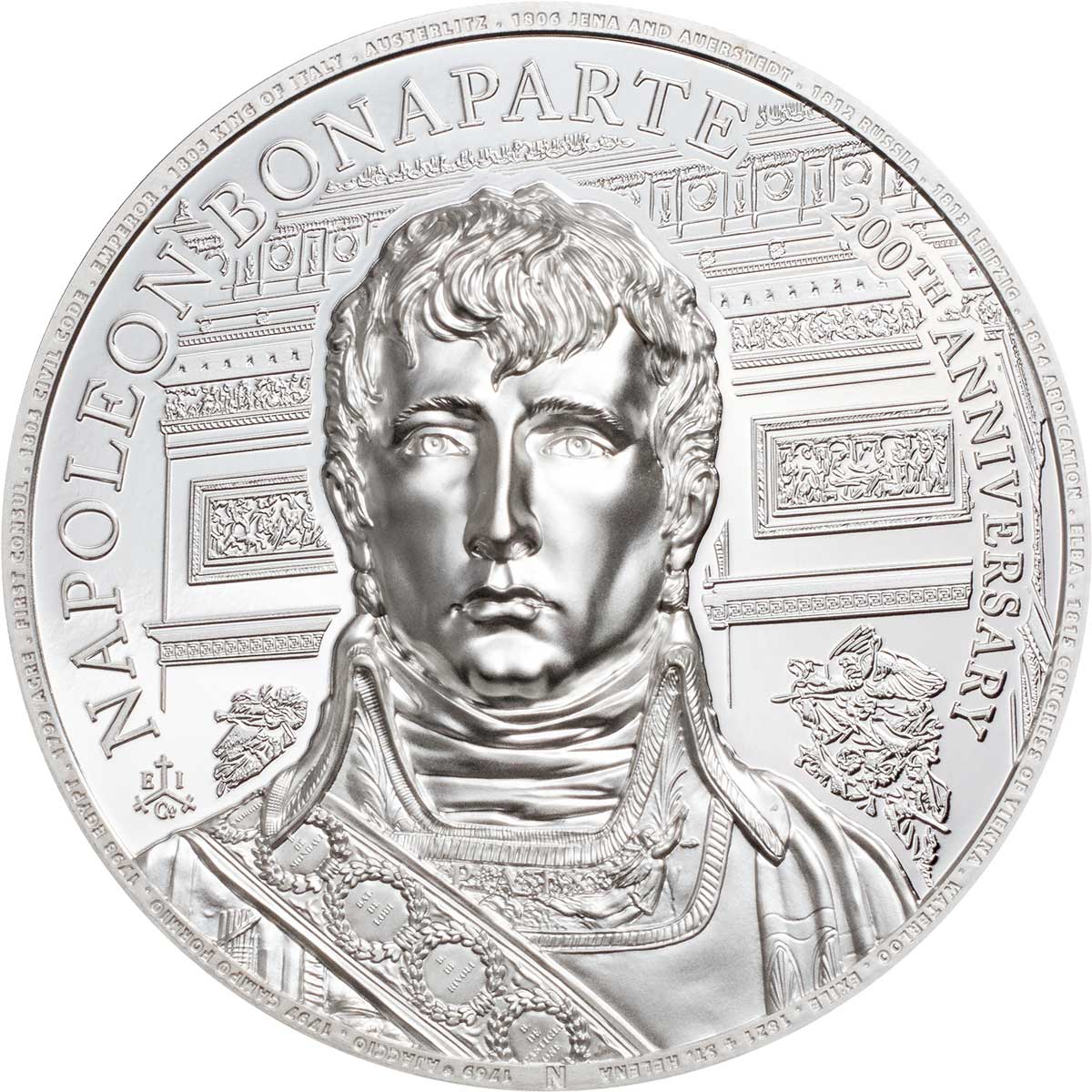
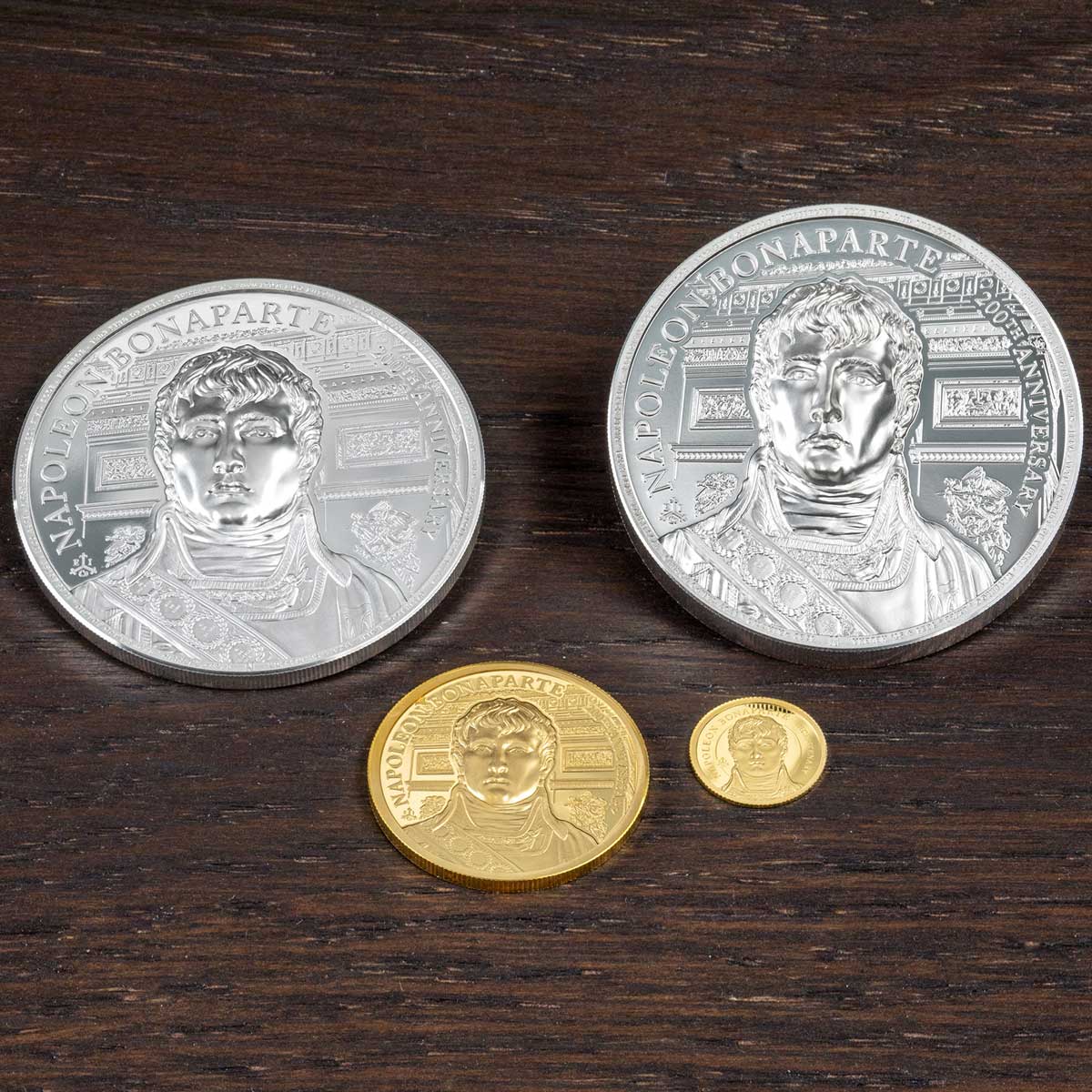
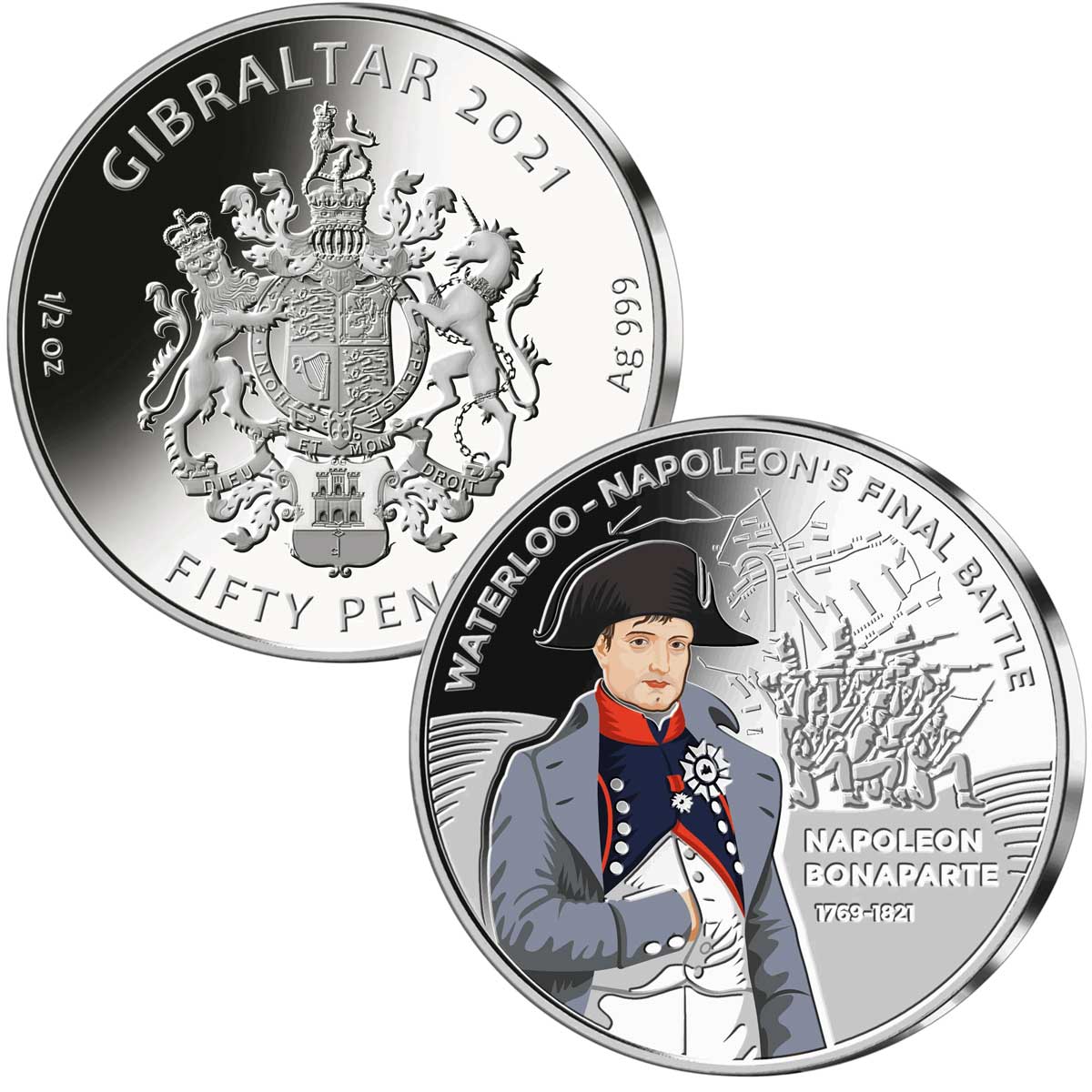
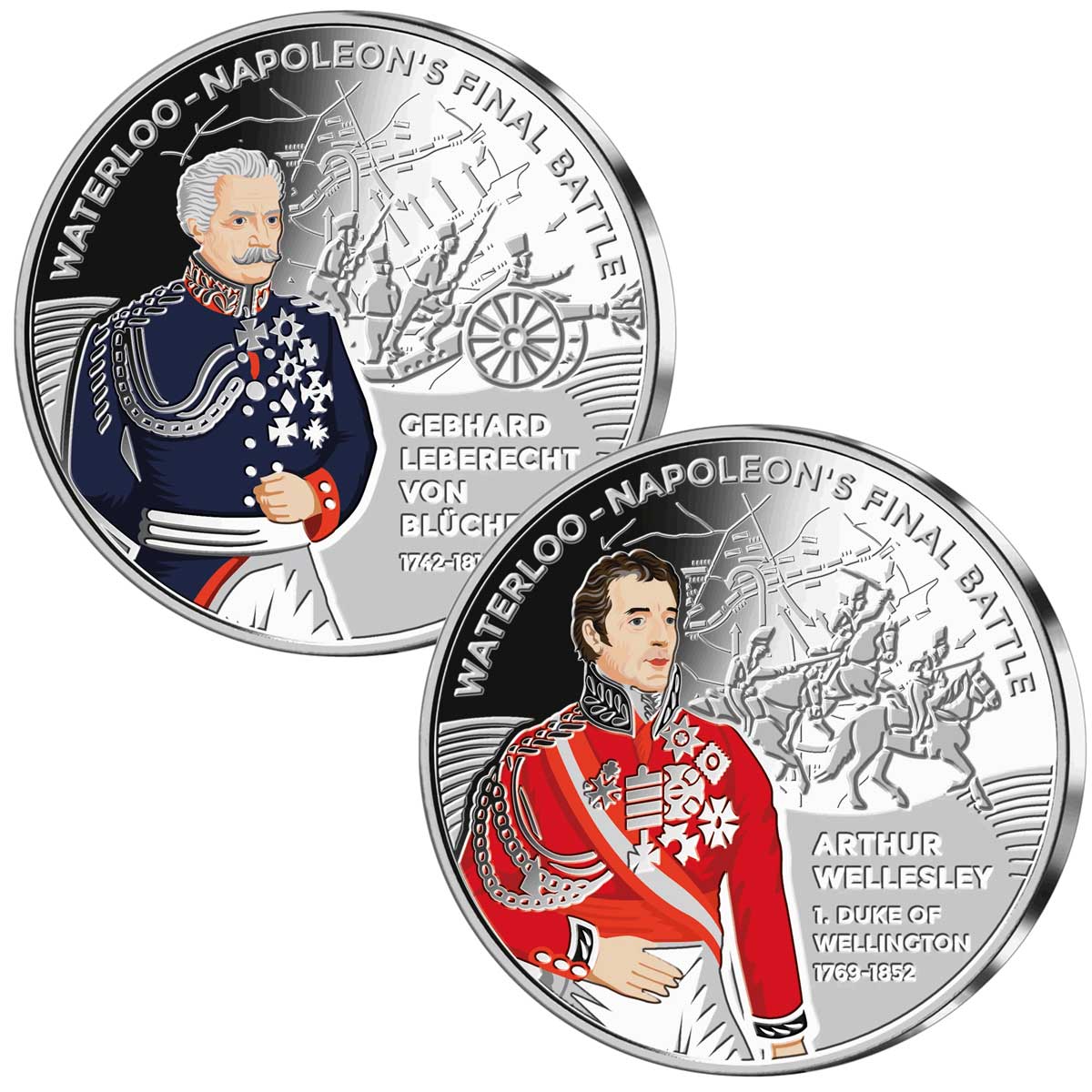




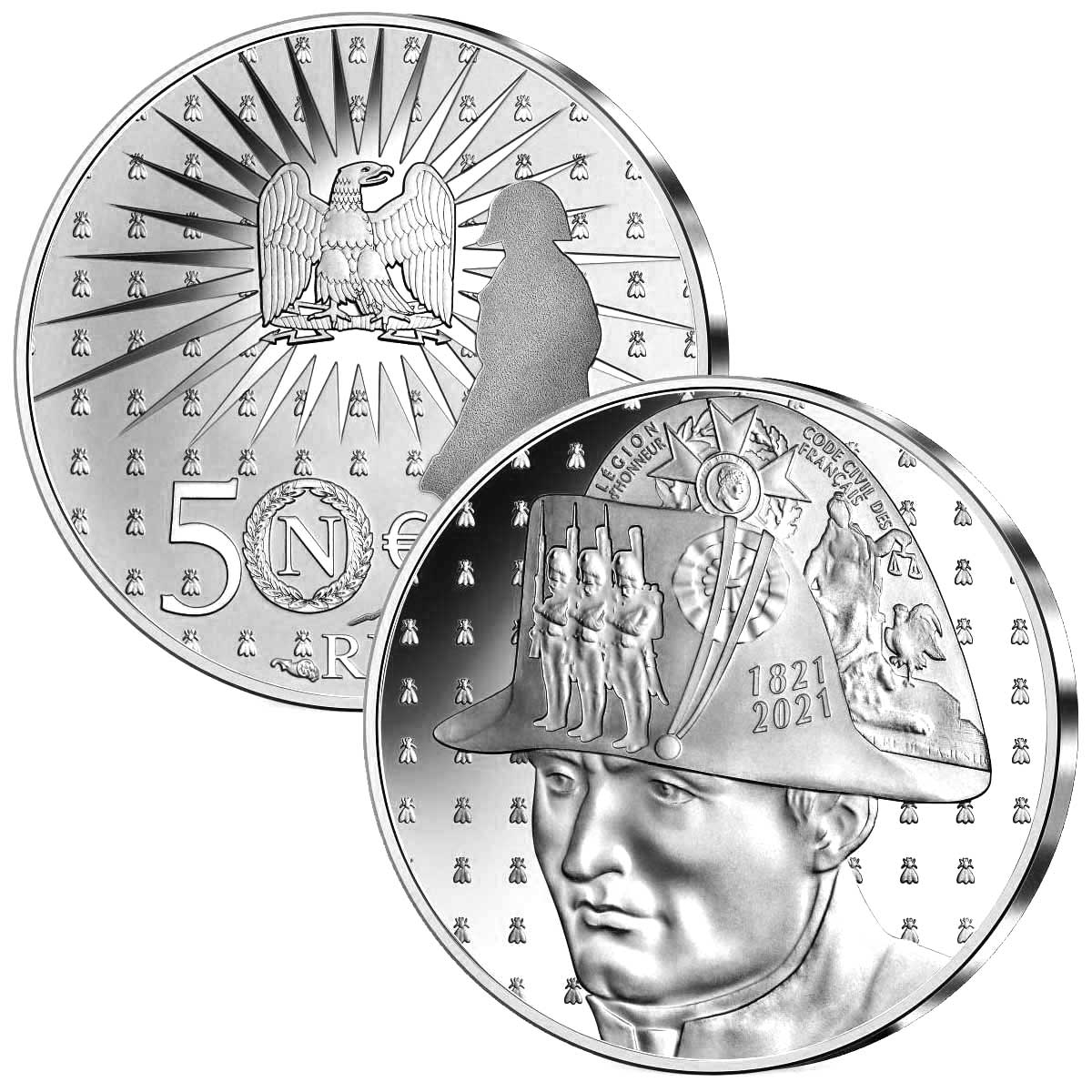



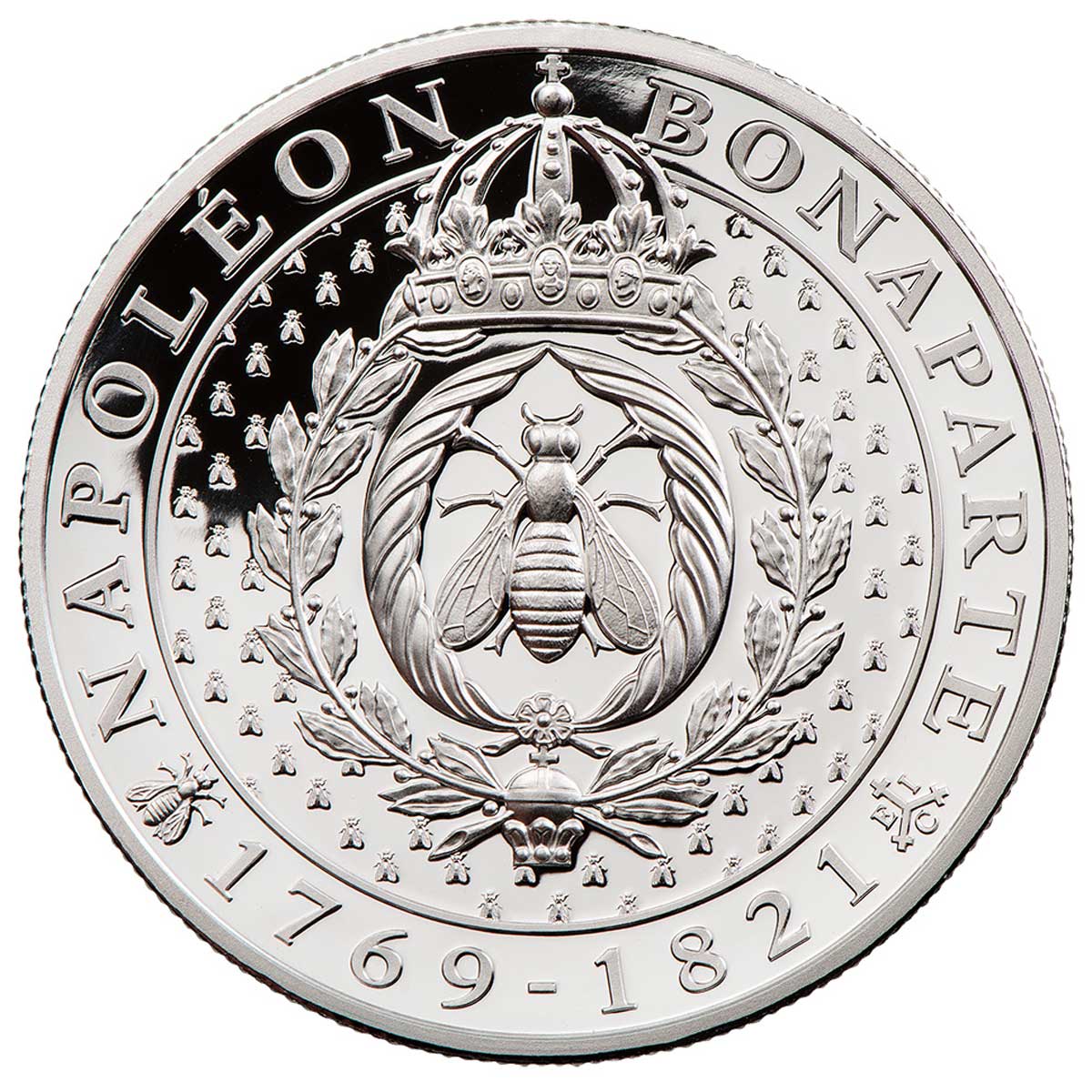
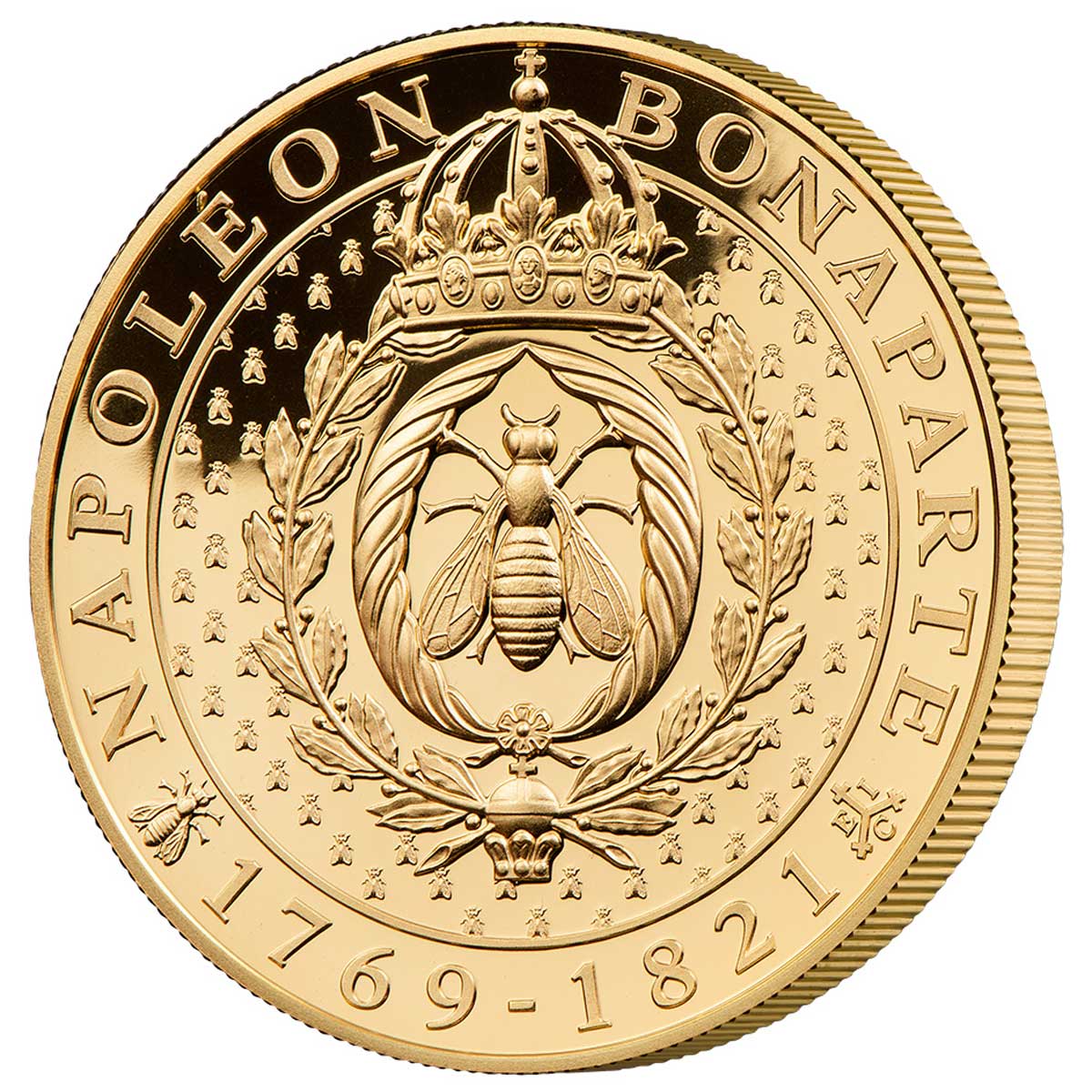
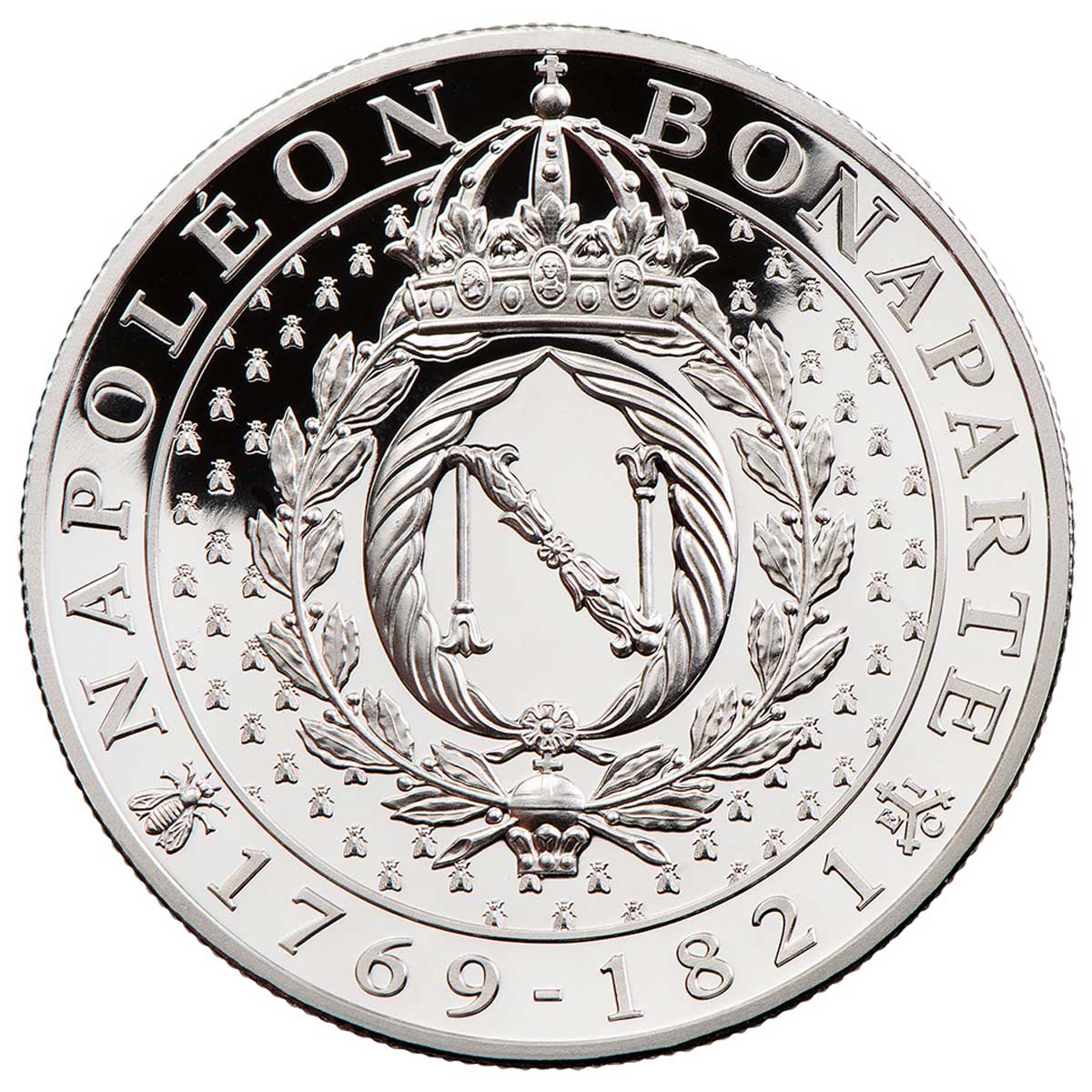
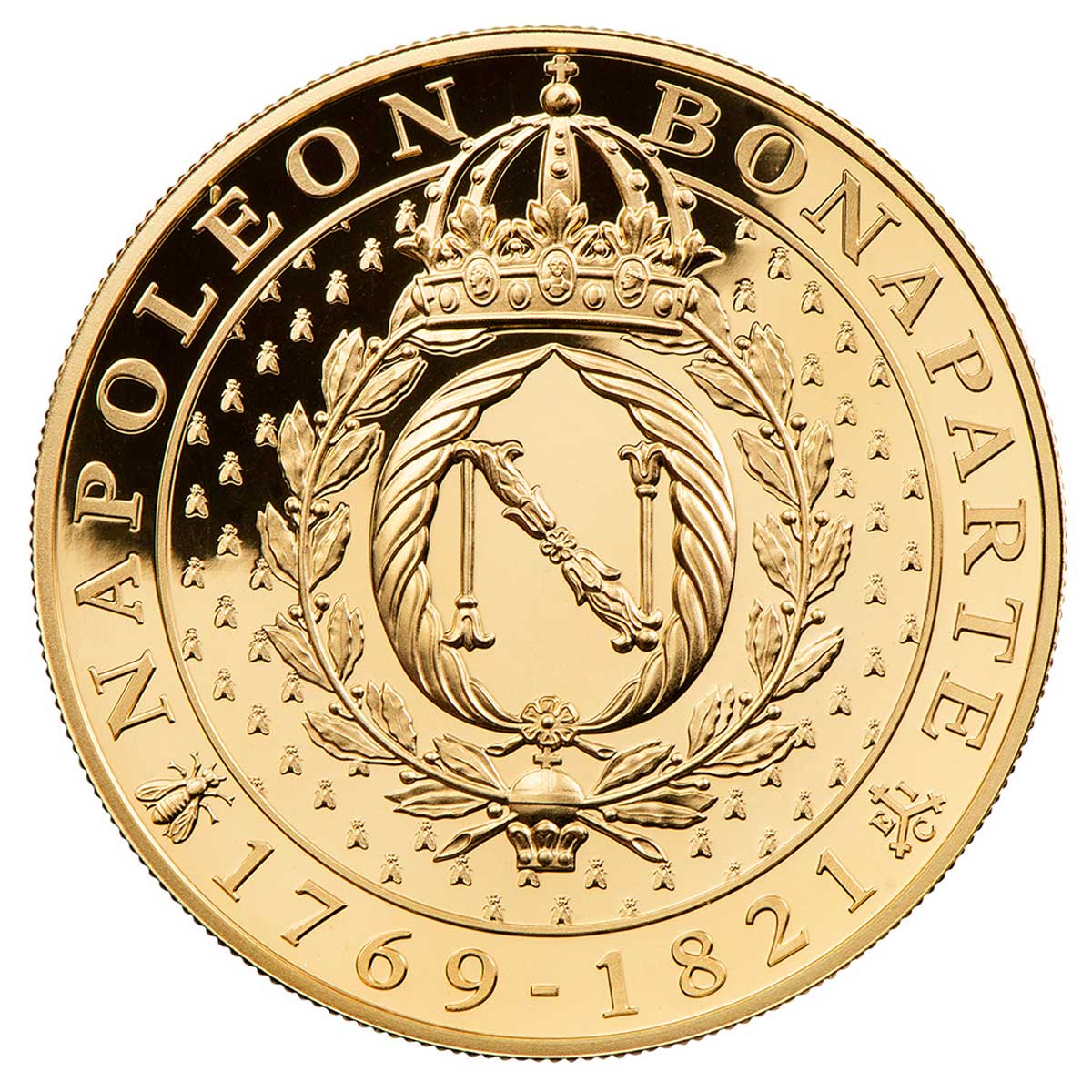


Tremendous overview. I have 2 and plan to get several French coins.
Thanks Louis. Good to see the mints actually throw some imagination at the anniversary. It stands in harsh contrast to the incredibly disappointing response for the 2000th anniversary of the Roman Emperor Augustus back in 2014. That this giant of a figure recieved such a lukewarm response from the industry was baffling and pretty sad.